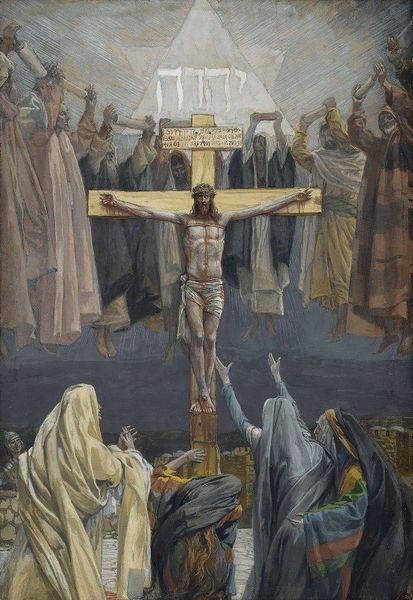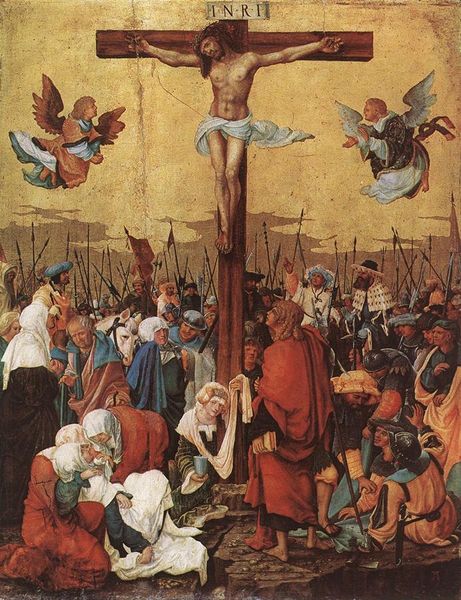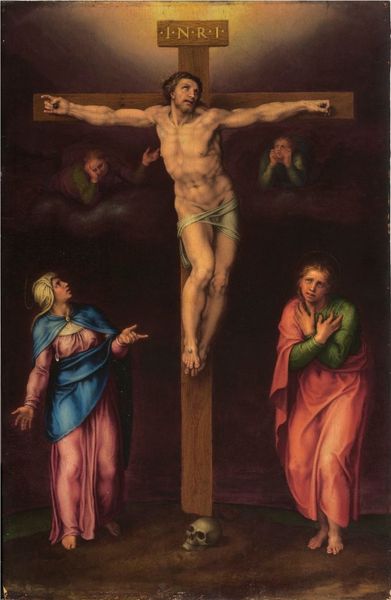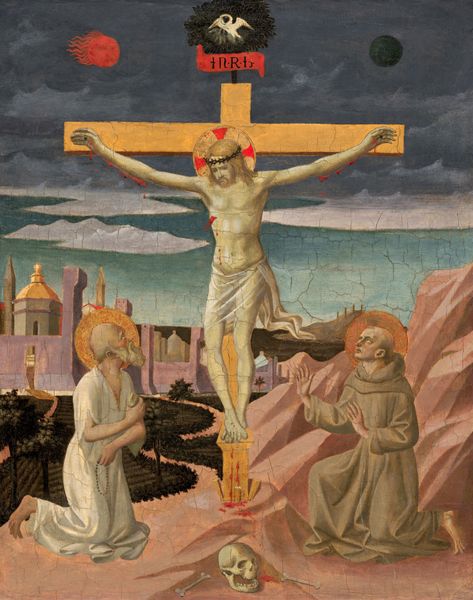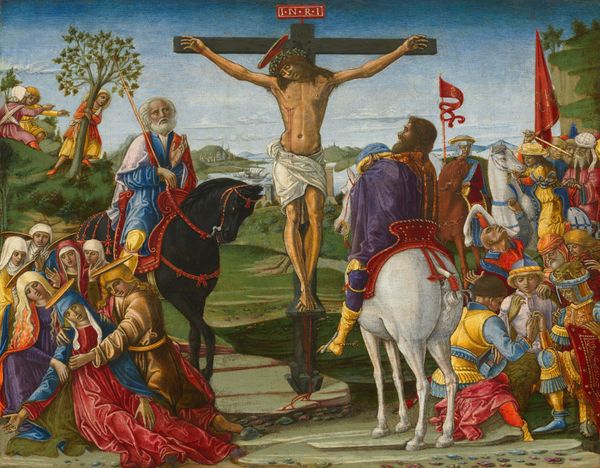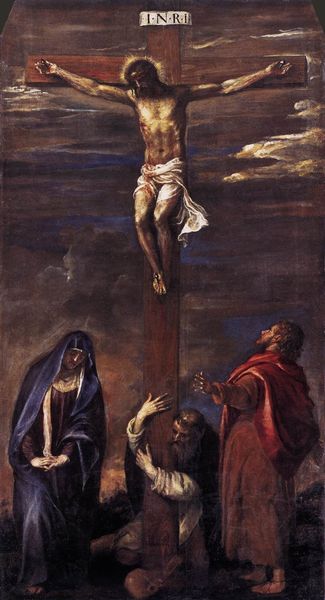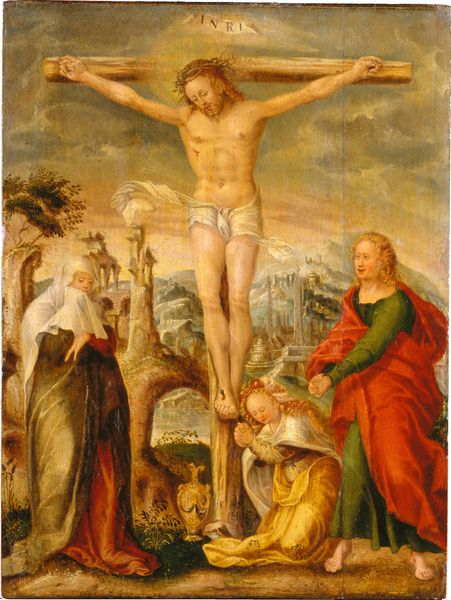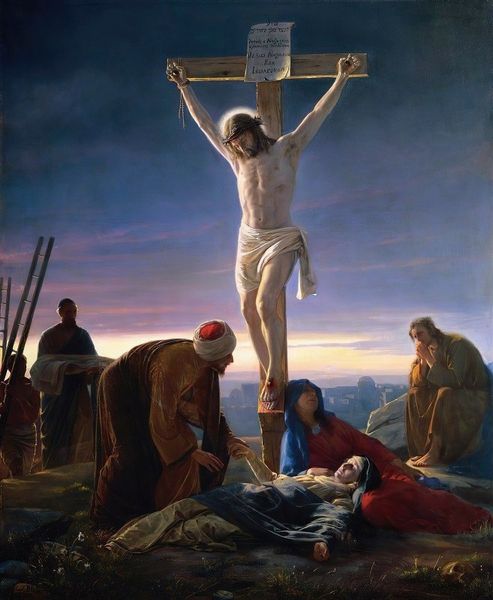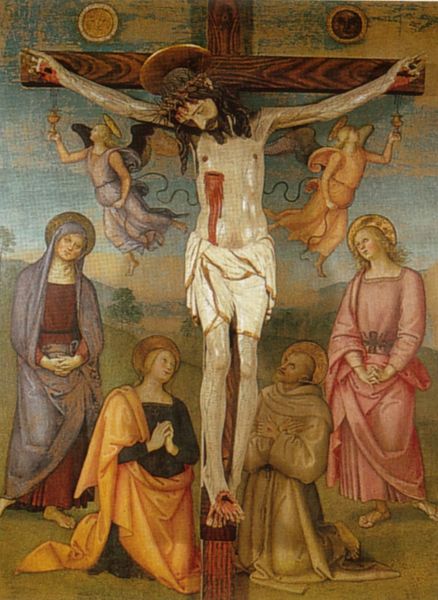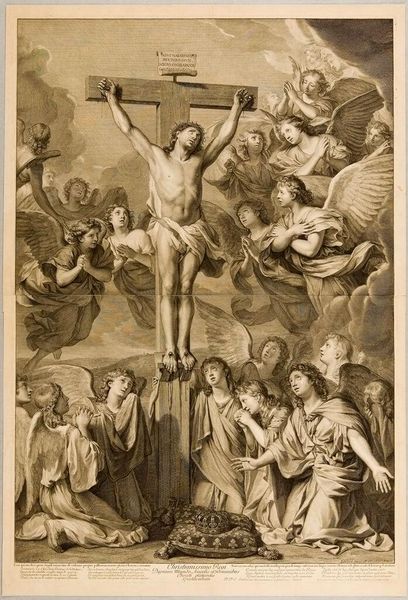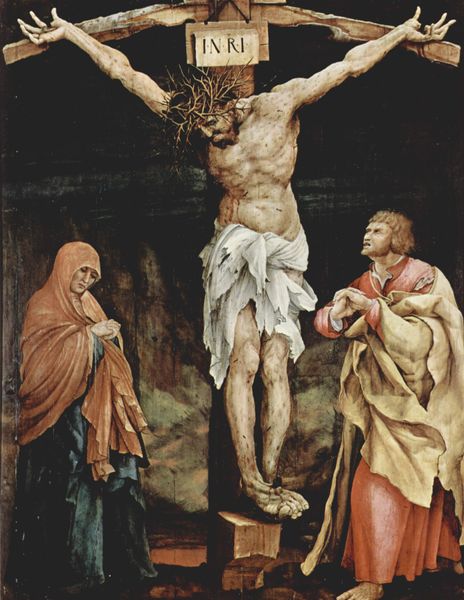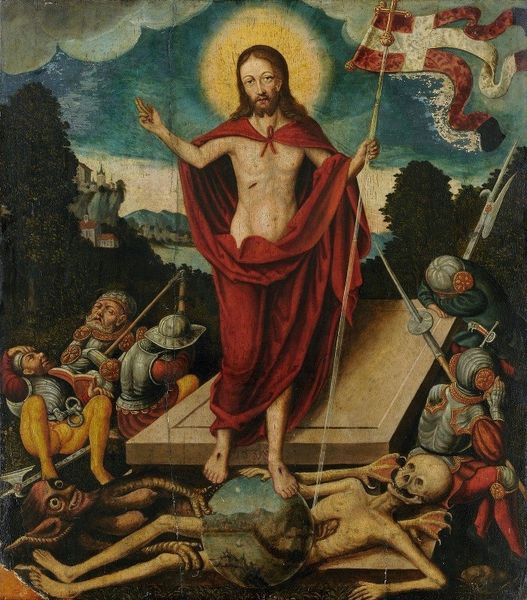
painting, oil-paint
#
narrative-art
#
baroque
#
symbol
#
painting
#
oil-paint
#
figuration
#
oil painting
#
studio composition
#
cross
#
mythology
#
history-painting
#
academic-art
Copyright: Public domain
Curator: Well, it's hard to look at that. The heaviness in the air is palpable. It's like being physically weighed down by the scene. Editor: I can understand that reaction. Here we see Wilhelm Kotarbinski's oil painting "The Crucifixion of Jesus Christ". It's an example of the Baroque style intersecting with narrative art conventions, attempting to monumentalize a pivotal moment in Christian history. Curator: Baroque is the word for it—all that drama, heightened emotion…it's trying so hard to make me feel something, and to its credit, it is definitely succeeding. The bodies, the shadows, everything just kind of spirals down. Editor: Indeed, artists like Kotarbinski often walked a tightrope between genuine artistic expression and the demands of powerful patrons, religious institutions in particular, keen to harness art’s emotional power for their own ends. We see common Baroque strategies used here in service of that power like strong contrasts between light and shadow, the positioning of the figures... How might those details underscore these ideological themes? Curator: Ideology is definitely encoded into this kind of picture. Think about how everyone is placed; the kind of faces they have; how even textures like the cloth worn, and the blood spilled can make something more dramatic than a simple historical scene. Editor: It seems as though the aim is for viewers across time to understand the specific historical meaning that the narrative holds for future viewers. It’s as though we are witnessing history, but in reality we’re positioned as members of an audience meant to interpret the significance for centuries to come. It does so, too, at a human level, offering intimate glances at human reaction. Curator: In the faces of people like Mary, but even the Roman soldier, there is some sort of emotionality captured, maybe empathy, maybe regret, maybe some amount of satisfaction or pride—as if their reaction to the Crucifixion had as much meaning as Jesus Christ himself. I think what Baroque techniques give us, beyond dramatic posing and chiaroscuro, is the opportunity to project meaning. Editor: Project and understand our relationship to the historical context of this scene as well. In these types of religiously, and historically motivated scenes there can be an expectation of viewers to see their role in both history, and eternity—a type of spiritual pressure? Curator: That's a great way to put it. These kinds of religiously-themed works really have an intense sense of scale to both pull you in and to push you back in reverence, in reflection. Editor: Yes, "reverence." A key component in so many religious depictions for centuries. That feeling of awe—achieved through these dynamic painting styles of the time is ultimately part of what made it, and its many subsequent re-imaginings, successful. Curator: Makes you think, right? And wonder how painting keeps pushing boundaries of meaning for both patrons and audiences through the ages.
Comments
No comments
Be the first to comment and join the conversation on the ultimate creative platform.
